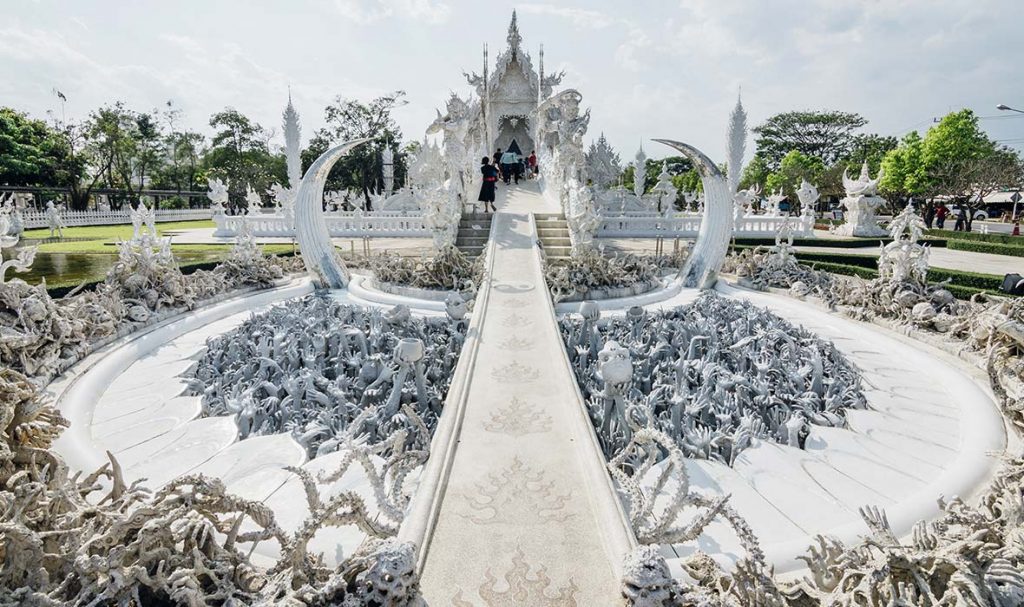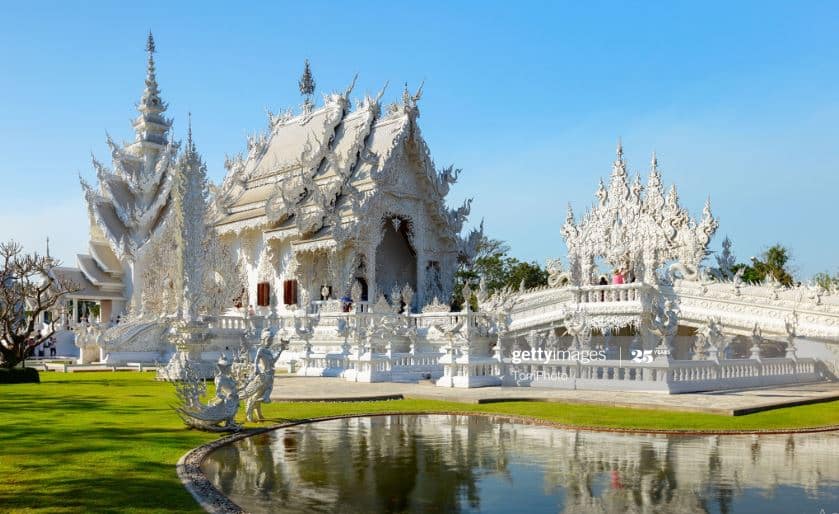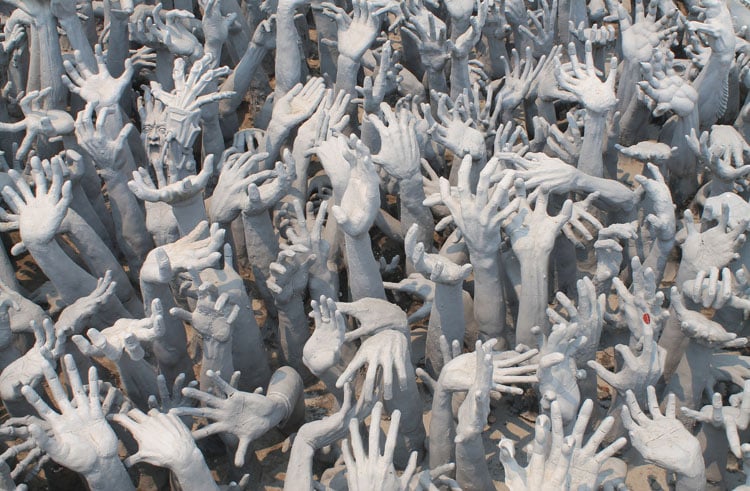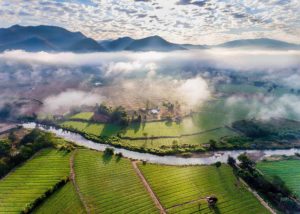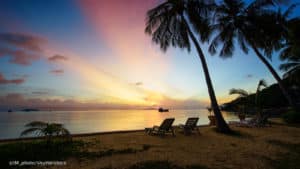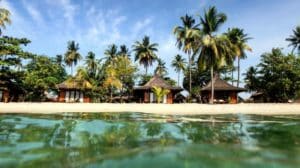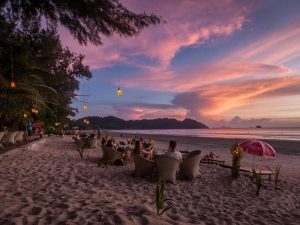White Temple Thailand:
mysticism and beauty
(Chiang rai)

Blog on Travel
White Temple Thailand: mysticism and beauty
One of Thailand’s most widely recognized temples is Wat Rong Khun, better known as “the White Temple.” White Temple Thailand has a great number of visitors, both Thai and foreign, are attracted by the temple outside Chiang Rai, which is one of the most visited sights of the city.
Wat Rong Khun is a unique temple that stands out through the white color and the use of pieces of glass in the plaster, sparkling in the sun. The white color signifies the purity of the Buddha, while the glass symbolizes the Buddha’s wisdom and the Dhamma, the Buddhist teachings.
The Wat Rong Khun was designed by Chalermchai Kositpipat, a famous Thai visual artist. To date, the temple is not finished. Eventually, there will be nine buildings including an ubosot, a hall to enshrine Buddhist relics, a meditation hall, the monks living quarters, and an art gallery.
White Temple Thailand Background
The original Wat Rong Khun had been in very poor condition towards the end of the 20th century. Restoration construction began on the building, but due to a shortage of funds, the project had to be abandoned.
The artist who was born in Chiang Rai, Chalermchai Kositpipat, has decided to restore the temple and to fund it with his capital. The artist has constructed the temple to be a center for learning and meditation and the Buddhist teachings to help people. The operations are already ongoing today.
Read meditation retreats in Thailand for more information and a list of Thai retreats and temples that teach meditation.
The structures and mysticism of the temple
The specifics of temples and buildings like the bridge of the “path of regeneration” or the “port of heaven” have importance and urge the public to concentrate on the Buddhist teachings which show how to avoid worldly temptations, desires, and covetousness, instead of concentrating on the mind.
Any aspect of the white temple has importance and invites the visitor to accept the Buddhist teachings that signify how to avoid earthly temptations, impulses, and covetousness, and then reflect upon the mind.
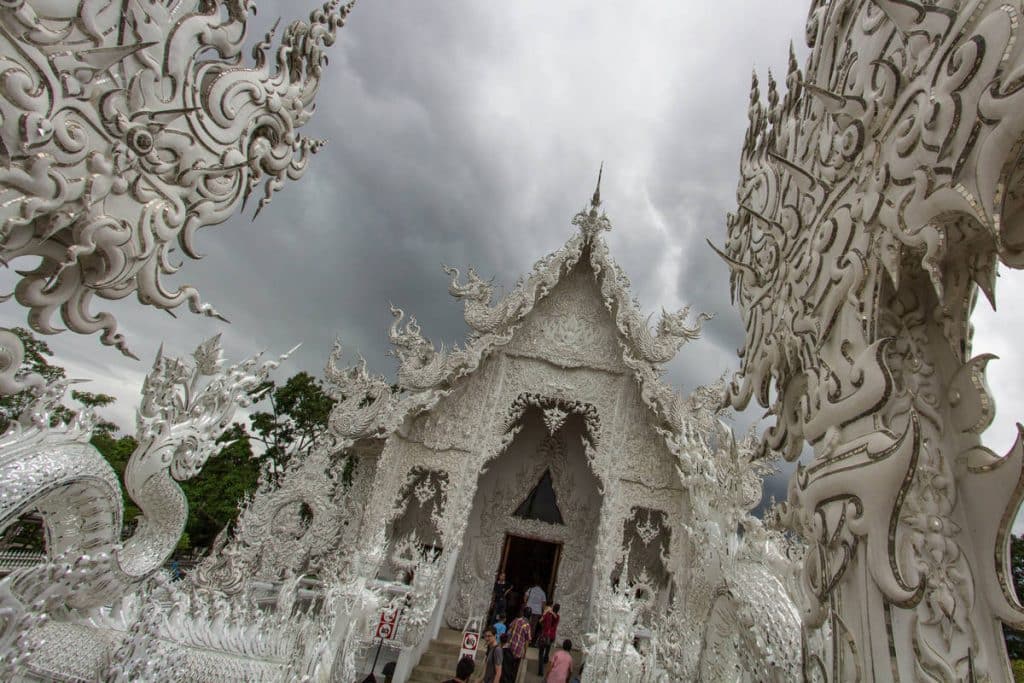
The Cycle of Rebirth bridge
A bridge across a tiny lake leads to the ubosot, the central structure of the white temple. There’s a triangular field in front of the bridge with hundreds of symbolic palms. It represents human pain and infirmity. The path to the ubosot, recognized as the ‘stage of regeneration’ bridge, reflects the passage to a condition free of pain from the process of death or rebirth. The road to happiness is symbolized by the struggles, gulf, and urge to transcend earthly issues.
Two elegant Kinnaret, a Buddhist mythology creature, half-human, half-bird, stand next to the lake.
The gate of heaven
Subsequently, after the passage across the bridge, the traveler enters the “Heavenly Doors” or the gate of heaven was guarded by two great creatures who represent Death and Rahu who determine the fate of man. Several Buddha portraits are in contemplation at the end of the bridge in front of the ubosot.
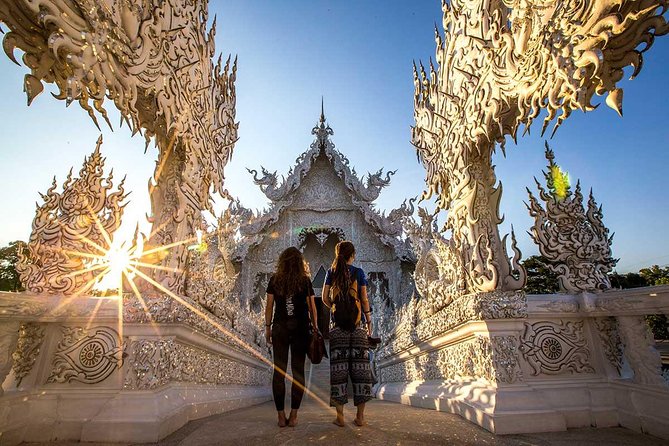
The Ubosot (ordination hall)
The ubosot or the ordination hall is the most significant building of the Wat Rong Khun with pieces of glass embedded in plaster. The rather ornate ubosot demonstrates many architectural features of North Thai traditional temples such as the three stylized Naga snakes on the barge boards.
Whereas the walls of many ancient temples show scenes of Buddhism, the white temple walls contain colorful murals representing modern good and evil, modern figures like Batman, Spiderman and Elvis, film, comics, and even space ships. A golden image of Buddha is found on the back wall of the ubosot.
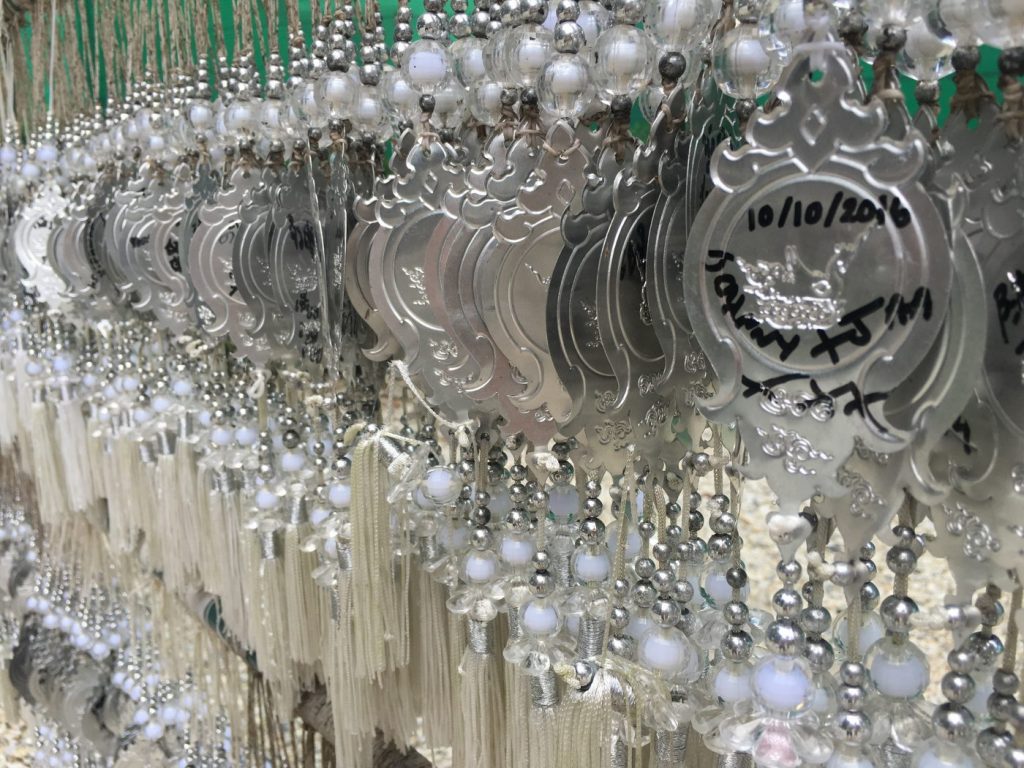
The Golden Building
The majority of the toilet room houses are a framework that sticks out for its color. This golden building represents the body, while the white ubosot represents the mind, another structure very ornately decorated. The gold symbolizes how the earthly wishes and wealth are focused. The golden building represents the idea of creating merit rather than material things and possession and concentrating on the mind.
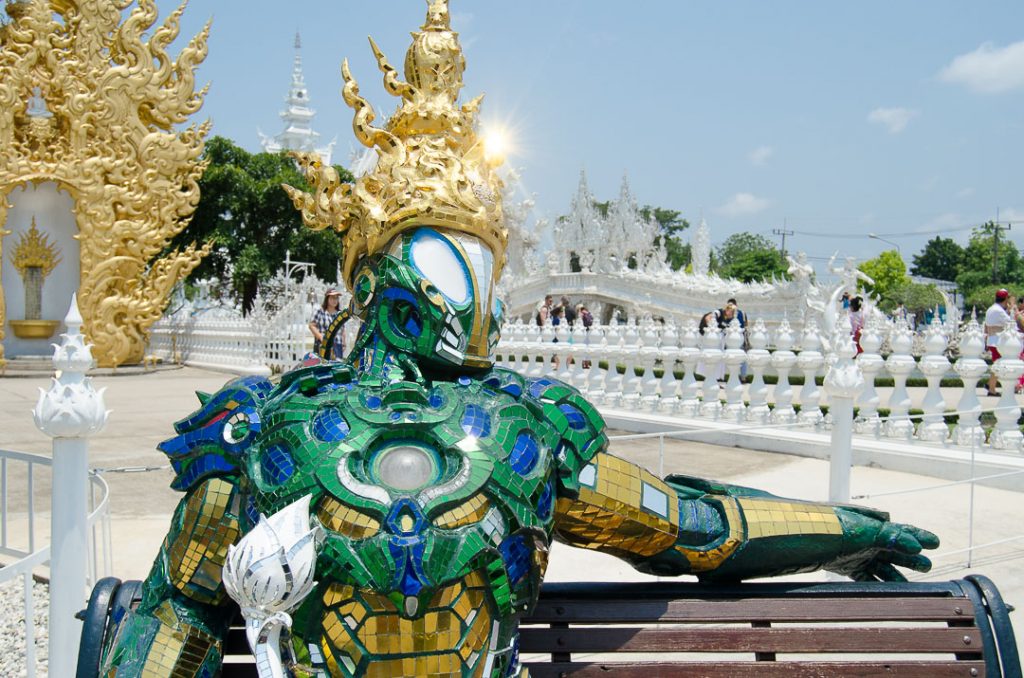
The Crematorium
The crematorium is another complexly ornamented building. The corpse is incinerated herein. In Buddhism death is the transformation from life to rebirth, a period of death and resurrection that can be terminated only through illumination. A human is renamed after death to one of many nations, including man, beast, celestial, and inferno. The condition in which he or she was resurrected is decided by the positive and poor actions in life and the cumulative worth of the deceased.
In connection with the mind which lasts forever, the people who attend the Cremation consider the transient nature of all on earth.
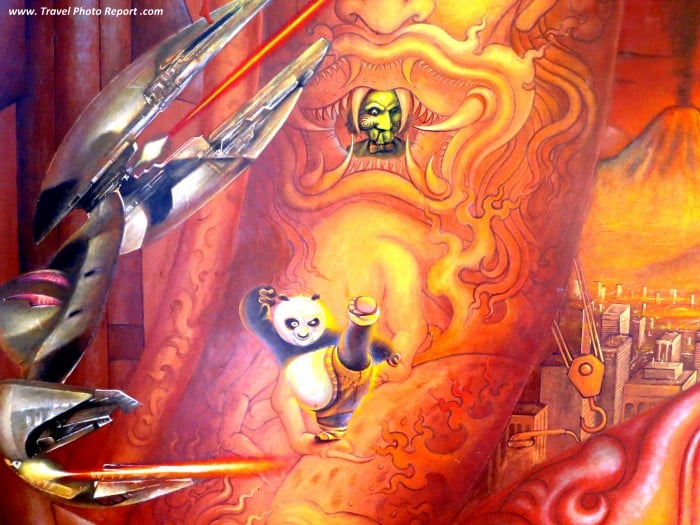
Several amenities and structures
There are many concrete plants across the temple grounds, hanging up from the thousands of medallions. With your name written on it, you may add your own to 30 Baht.
Temple visitors would hope and wish with a few coins being tossed into the wishing well.
Take a glance at the broad building behind the temple and get a sense of the enormous attempt that the white temple has been created. In the entrance hall, hand-crafted mosaic mirror fragments are placed in different sections until installed into a structure.
How to get there:
Wat Rong Khun is located about 15 kilometers southwest of Chiang Rai town just off Highway 1 (Phahonyothin Road). Additionally, some Private air-conditioned taxis are the most comfortable way to travel there. The ride from the town takes about 20 minutes. Most of the hotels in Chiang Rai can reserve one for you with no hassle included.
Since this is very convenient via public transport to the white shrine. The busses would depart the old bus stop in the middle of Chiang Rai, by the night bazaar. Next, the transit services, the ride takes roughly 30 minutes and for one way trip is 20 Baht. Alternatively, you can take a blue songthaew at around 300 Baht’s old bus station, if you have plenty of cash to spare.
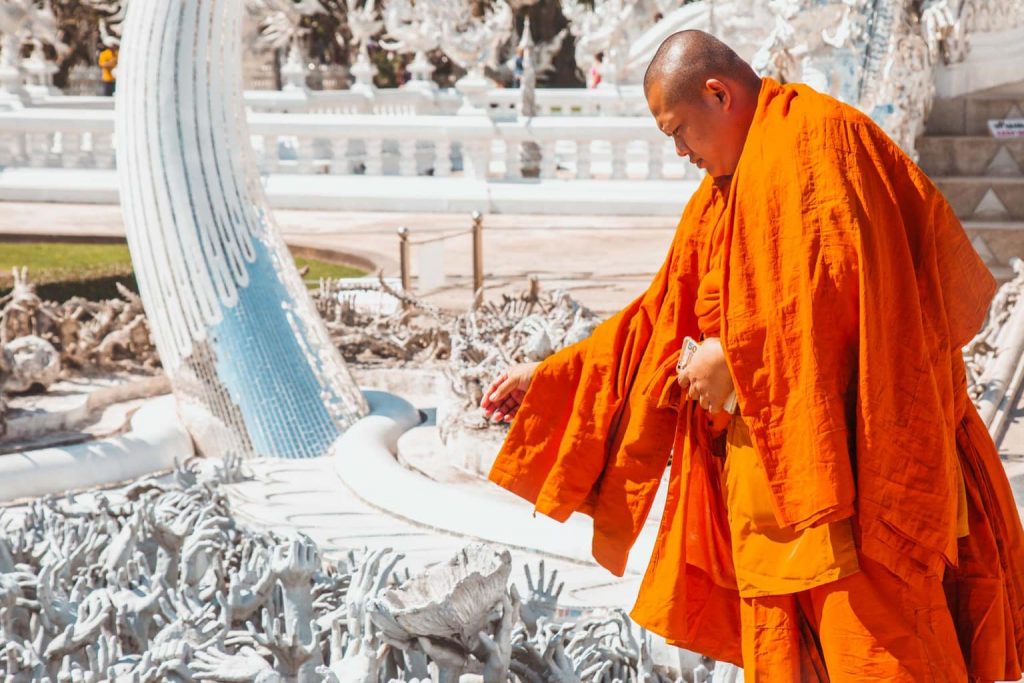
Admission costs:
The fare price at the booth is (Thai Baht):
50 for both adults and child
Donations are very well appreciated and accepted for constructing and sustaining the temple.

